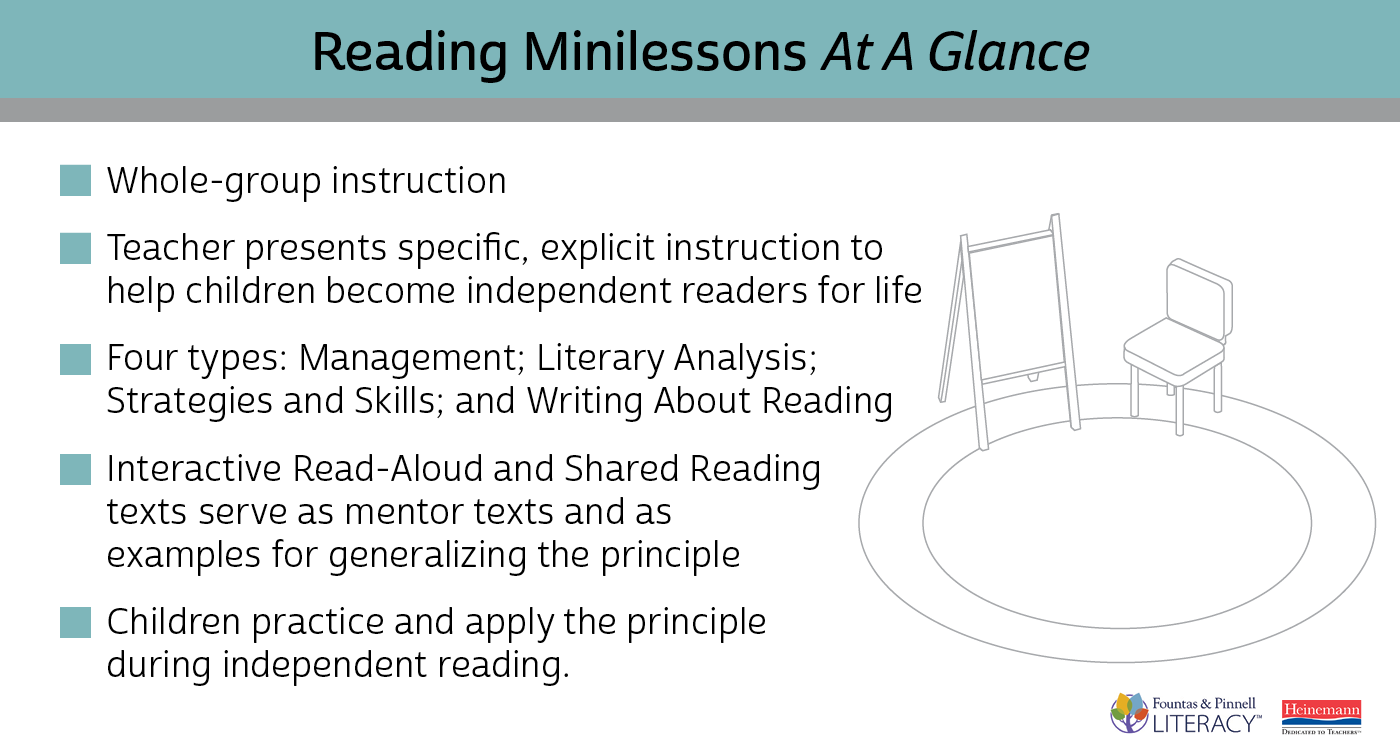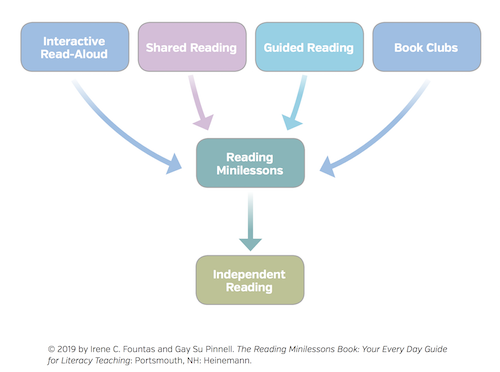*Effective reading instruction involves a combination of powerful instructional settings. This post is the next in our "What is...?" series, where we define each instructional context that makes up a coherent literacy system.
*Effective reading instruction involves a combination of powerful instructional settings. This post is the next in our "What is...?" series, where we define each instructional context that makes up a coherent literacy system.
What are reading minilessons?
As a whole-group instructional context, reading minilessons are concise, explicit lessons with a purposeful application in building your students' independent reading competencies. Each minilesson engages students in inquiry that leads to the discovery and understanding of a general principle they can apply to their own reading or writing about reading. Often, interactive read-aloud books that students have already heard serve as mentor texts from which they generalize the understanding.

Why are reading minilessons important?
The goal of all reading is the joyful, independent, and meaningful processing of a written text. The key to independent reading is making an explicit connection between all other instructional contexts – interactive read-aloud, shared reading, guided reading, and book clubs – and the reader's own independent work. Making these explicit links is the goal of minilessons. All teaching, support, and confirmation lead to the individual's successful, independent reading.

"Reading minilessons form the "glue" that connects literacy learning, makes it explicit, and turns it over to students to apply independently." – Irene C. Fountas and Gay Su Pinnell
What do reading minilessons look like?
Minilessons are brief – each one will take approximately five to ten minutes to deliver during whole group time. Usually, you will teach only one focused lesson each day, but minilessons will be logically organized and build on each other. Anchor charts state the minilesson principles and provide a way for you to capture the students' thinking during the lesson and reflect on the learning at the end.
Types of reading minilessons:
- Management – These lessons cover routines that are essential to the smooth functioning of the classroom and students' self-management and productivity. Most of your minilessons at the beginning of the school year will focus on management.
- Literary Analysis – These lessons build students' awareness of the characteristics of various genres and of the elements of fiction and nonfiction texts. The books that you read during interactive read-aloud and shared reading serve as mentor texts when applying the principles of literary analysis.
- Strategies and Skills – While most teaching related to processing texts will take place in guided reading, general lessons can reinforce broad principles of which every reader in the class may need to be reminded.
- Writing About Reading – These lessons introduce the reader's notebook and help students use this important tool for reflecting on their reading and documenting their reading life for the year.
The reading minilesson plays a key role in systematic, coherent teaching, all of which is directed toward each reader's developing competencies. Put reading minilessons into action and make learning visible for every child, every day.
To learn more about The Reading Minilessons Books, click the link below.
Also available in convenient eBook format.
~The Fountas & Pinnell Literacy™ Team
Check out the entire "What is?" blog series:


